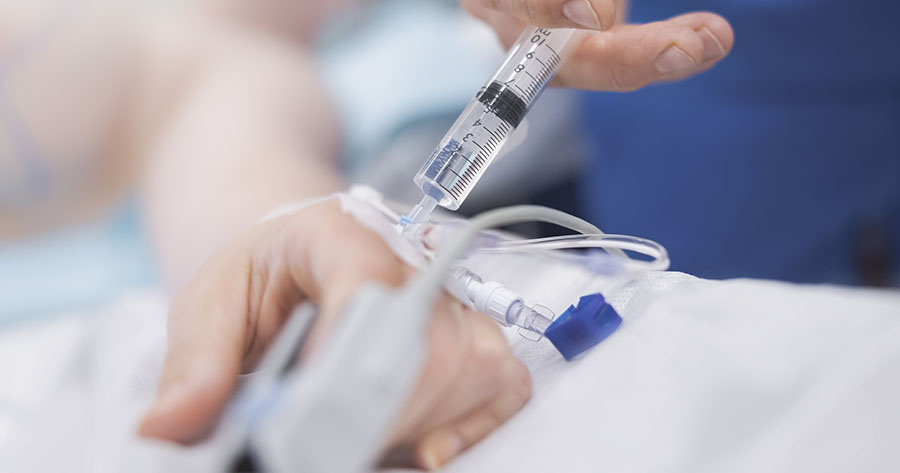There have been recent dramatic changes in the diagnosis and treatment of diabetes presenting in the first 6 months of life. It is now known that this form of diabetes, which develops in the neonatal period, is often caused by a change in a single gene (monogenic) and is not type 1 diabetes (Slingerland and Hattersley, 2005; Edghill et al, 2006).
These major changes have resulted from the identification of neonatal diabetes as a condition that is frequently caused by mutations in the KCNJ11 or ABCC8 genes, which encode the Kir6.2 and SUR1 subunits of the beta-cell adenosine triphosphate (ATP)-sensitive potassium (KATP) channel (Gloyn et al, 2004; Babenko et al, 2006; Proks et al, 2006).
People with neonatal diabetes due to KATP channel mutations have previously been dependent on lifelong insulin injections as the mutated channels fail to close in response to ATP. This prevents depolarisation of the beta-cell membrane and influx of calcium2 ions, with the result that insulin is not released from the beta-cell. However, in most cases these individuals can transfer to sulphonylurea therapy, which closes the KATP channel by binding to the SUR1 subunit, thereby allowing the release of insulin (Gribble and Reimann, 2003). Thus, many of those who were previously dependent on insulin can now be treated successfully with sulphonylureas (Sagen et al, 2004; Babenko et al, 2006; Pearson et al, 2006; Rafiq et al, 2008).
Genetic causes of neonatal diabetes
Neonatal diabetes is found in 1 in 100–200 000 live births (Stanik et al, 2007; Slingerland et al, 2009). As the majority of mutations occur spontaneously there is often no family history of diabetes (Edghill et al, 2007).
KATP channel mutations account for around 40% of permanent neonatal diabetes (PND) and 25% of transient neonatal diabetes (TND) (Flanagan et al, 2007; Edghill et al, 2008). These mutations will be the focus of this article as the majority of those affected are able to transfer from insulin injections to sulphonylurea tablets.
Mutations in the gene encoding insulin account for 12% of PND cases (Støy et al, 2007; Edghill et al, 2008) and people with these mutations require ongoing insulin treatment. The aetiology in 40% of people with PND remains unknown, suggesting that other genetic causes are still to be identified. The genetic basis of TND is known in approximately 95% of cases (Flanagan et al, 2007), with chromosome 6q24 abnormalities the most common cause (Gardner et al, 2000).
Clinical characteristics (Box 1)
Neonatal diabetes
Neonatal diabetes is defined as diabetes diagnosed within the first 6 months of life. Analysis of pancreatic autoantibodies and human leukocyte antigen genotypes indicates that individuals diagnosed with diabetes before 6 months have monogenic diabetes and not type 1 diabetes (Iafusco et al, 2002; Edghill et al, 2006). Most infants with neonatal diabetes present with symptomatic hyperglycaemia and may present in diabetic ketoacidosis (Hattersley and Ashcroft, 2005). While PND requires lifelong treatment, TND resulting from a KATP channel mutation will typically remit by a median of 35 weeks, with most of those affected having a relapse of diabetes in late childhood (Flanagan et al, 2007).
Birth weight
Infants with neonatal diabetes usually have a low birth weight (median 2.65 kg), with the majority below the 10th centile for gestational age due to reduced insulin-mediated growth in utero (Edghill et al, 2008). However, they show rapid catch-up growth after treatment is started (Hattersley and Ashcroft, 2005; Slingerland and Hattersley, 2005).
Other features
There is a spectrum of features associated with KATP channel mutations. Isolated diabetes is the most common phenotype, occurring in 80% of cases (Hattersley and Ashcroft, 2005).
Neurological features are present in approximately 20% of those with a KATP channel mutation. They present either as DEND syndrome (developmental delay, epilepsy <12 months and PND) or more frequently as intermediate DEND (iDEND) with mild developmental delay and permanent neonatal diabetes (Hattersley and Ashcroft, 2005). The developmental delay includes muscle weakness, a delay in motor function and learning difficulties (Gloyn et al, 2004).
The neurological features are explained by the expression of mutated KATP channels in nerves, muscle and brain. The severity of the mutation determines the clinical presentation: mutations with the greatest impact on the closing of the channel by ATP cause DEND or iDEND syndrome (Proks et al, 2004).
Transfer from insulin to sulphonylurea in neonatal diabetes
For those with neonatal diabetes, identification of a KATP channel mutation has revolutionised therapy and transformed their lives and those of their families (Hattersley and Ashcroft, 2005; Shepherd, 2006). Ninety per cent of those with KCNJ11 neonatal diabetes have successfully discontinued insulin therapy and all show improved HbA1c levels (8.1% [65 mmol/mol] on insulin, 6.4% [46 mmol/mol] on sulphonylureas; P<0.001; Pearson et al, 2006).
The median dose of glibenclamide initially required for those with KCNJ11 mutations is 0.45 mg/kg/day (range 0.05–1.5 mg/kg/day (Pearson et al, 2006), while those with ABCC8 mutations require a lower median
dose (0.26 mg/kg/day (Rafiq et al, 2008). Glucose values fluctuate less, as well as being lower (Zung et al, 2004), and improved glycaemic control is maintained over 12 months despite reducing doses of sulphonylureas (Pearson et al, 2006). Although relatively high doses are required, the only reported side-effects appear to be transitory diarrhoea (Codner et al, 2005) and tooth discoloration (Kumaraguru et al, 2009).
Recent (unpublished) data indicate that of 122 people with a KATP channel mutation in whom treatment change was attempted, 111 (91%) successfully transferred from insulin to sulphonylureas. The majority of those in whom transfer was unsuccessful had the more severe DEND syndrome or were middle-aged or older adults when transfer was attempted. Transfer is more successful in children than in adults, but is worth attempting at any age.
Improvements in neurological function
Improvements in motor and cognitive function have been reported in people with iDEND, which have coincided with glibenclamide introduction (Slingerland et al, 2006; 2008). This may be explained by the binding of glibenclamide to mutated KATP channels in the muscle, peripheral nerves and brain.
Although many cases of DEND do not respond to sulphonylurea therapy (Pearson et al, 2006), there have been two reports of people with DEND responding with improved neurological function: one person’s epilepsy and psychomotor development improved (Shimomura et al, 2007) and a second showed improved verbal performance, visual naming ability, verbal learning and long-term memory (Gurgel et al, 2007). These data indicate that sulphonylurea therapy should be attempted in all those with KATP channel mutations.
The case study presented in Box 2 illustrates the issues discussed above.
Conclusion
The majority of referrals for genetic testing for neonatal diabetes come from paediatricians. Consequently, adults with PND are probably still underdiagnosed and more effort should be made to identify these individuals as many will benefit from sulphonylurea treatment.
Diabetes teams should check their patient databases for records of people diagnosed with diabetes before 6 months of age and refer them for genetic testing, irrespective of their current age. Genetic testing is clinically important as these individuals are likely to have improved glycaemic control and quality of life on sulphonylurea treatment compared with insulin therapy, and some show an improvement in neurological features.
Acknowledgements
MS is funded by a National Institute for Health Research (NIHR) Fellowship. MS, SE and AH are supported by the NIHR Peninsula Clinical Research Facility. SEF is the Sir Graham Wilkins Peninsula Medical School Research Fellow. AH receives support from the European Community FP7 program CEED3 (HEALTH-F2-2008-223211). With thanks to Dr Stephen Gilbey for referring the patient described for genetic testing.





The risk factors and what might be done to address them.
24 Mar 2025